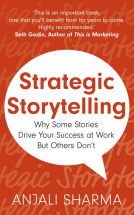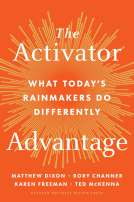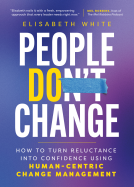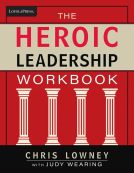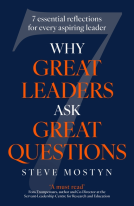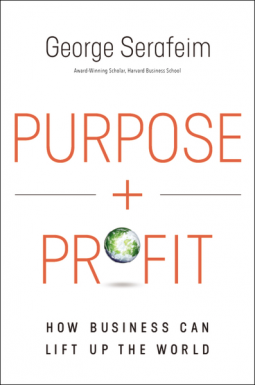
Purpose and Profit
How Business Can Lift Up the World
by George Serafeim
This title was previously available on NetGalley and is now archived.
Send NetGalley books directly to your Kindle or Kindle app
1
To read on a Kindle or Kindle app, please add kindle@netgalley.com as an approved email address to receive files in your Amazon account. Click here for step-by-step instructions.
2
Also find your Kindle email address within your Amazon account, and enter it here.
Pub Date Aug 09 2022 | Archive Date Feb 23 2024
Talking about this book? Use #PurposeandProfit #NetGalley. More hashtag tips!
Description
Are purpose and profit in conflict, or can both be achieved simultaneously with the right mindset and tools?
What are the forces that are reshaping the relationship between the two? What can we all do to strengthen the relationship between purpose and profit as entrepreneurs, managers, employees, consumers, and investors? Backed by cutting-edge research, Purpose and Profit provides answers to these fundamental questions that are increasingly defining the business landscape all around the world. Distinguished Harvard Business School Professor George Serafeim takes readers on a research-driven journey to understand:
- How and why environmental and social issues are becoming increasingly relevant for organizations worldwide;
- The ways that companies can design and implement strategies that generate greater impact;
- The six archetypes of value creation enabled by these new trends;
- The role of investors in driving greater recognition of ESG issues; and
- How we can all look at the choices we make and careers we pursue in a way that maximizes purpose and profit in our own lives.
Available Editions
| EDITION | Other Format |
| ISBN | 9781400230358 |
| PRICE | $27.99 (USD) |
| PAGES | 240 |
Available on NetGalley
Featured Reviews
My MBA was focused on "doing good while doing well" and this book accurately and fairly succinctly summarizes the key points of such an education and presents it in such a manner that many businesspeople and entrepreneurs will find approachable and thought-provoking. Of course, this is just one book covering a wide variety of topics, but I do believe that those who are truly interested in finding ways to do good while doing well in their business ventures will find this to be a useful foray into the subject matter and will encourage further research on the topic.
In addition to the sources in the endnotes, the book offers a bibliography in the back for further reading for those who are truly invested in learning more. My only gripe is that George Serafeim has written or co-authored every single one of them with the exception of only one title. Surely there are other worthy sources he could recommend (and there are).
 Avory F, Reviewer
Avory F, Reviewer
Is it possible for companies to work towards a purpose of environmental, social, or civic good while also making a profit? And if so, what are the roles in bringing about a shift towards purpose for those outside the executive level—staff, consumers, and investors? These are the questions Harvard Business School professor George Serafeim sets out to answer in Purpose & Profit. Drawing on his own research and those of his colleagues over the past decade and change, Serafeim illustrates a rapid shift in the corporate mindset while also emphasizing the importance of skillful and gradual execution for individual companies and highlighting some of the failures.
As someone with a non-profit background, I have a somewhat different lens than the typical reader. Rather than wondering “is it possible to profit while doing good?” I came into this book more interested in “is it possible to do good while focusing on profit?” While the rapid shifts Serafeim describes are encouraging, I wouldn’t stay this book shifted my mindset on the fundamental evils of capitalism. However, I do think the concepts he sets forth are important for the system we’re currently stuck in, and some would transfer cleanly to a different economic model (one, for example, with depreciating currency). For the more typical reader, this book lays out a convincing argument and is also imminently practical.
Serafeim is critical of planned economies, having grown up in Greece, but also admits that capitalism as it existed in the 90s and early 2000s proves that many of the criticisms of increased regulation also apply to free markets. This openness to criticizing some of the dogma of profitability is a refreshing perspective from someone in the business world, and I would certainly recommend this book to those who are skeptical about the interrelation of doing good and making money.
Personally, I was most interested in some of the ideas for investors, including the concept of impact-weighted accounting that Serafeim co-created. This initiative aims to elevate companies’ impact reporting to the point that environmental, social, and governance impact is considered just as important as risk and return in making business decisions. “The impact-weighted accounts movement insists that we need to redefine as a society what success means, and in fact what profit means,” Serafeim explains. When companies use an impact-weighted metric, they’re stating the value of the company in dollar terms with an adjustment based that takes into account value contributed to society (or harm caused).
Given our current state of collective crisis, this kind of reporting seems particularly crucial, and if governments mandate it there might be a chance for a turnaround such as what Charles Eisenstein describes in Sacred Economics, where companies are motivated by their bottom line to repair the planet and minimize harm caused. This also seems like a pipe-dream, but Serafeim’s survey of the landscape from 2008 to the 2021 shows that even our current limited metrics represent a very rapid shift from an attitude of social good being completely irrelevant to business to one where companies at least make an effort to convince the public that they’re doing good work, and so a similar leap ahead might indeed be possible. He also focuses on the role of institutional investors such as pension plans, and how these might be a driving force for change.
Obviously aligning environmental incentives with financial ones is a good thing, and this approach is a practical one that acknowledges corporate focus on the bottom line. While I personally question whether valuable contributions can always be reduced to a dollar value, it’s a step in the right direction that speaks the corporate language.
Serafeim suggests in this book that folks in all sorts of roles can influence businesses, and provides recommendations for staff, investors, and consumers as well as leaders, but concrete information for leaders is probably the most valuable. Executives who are skeptical about sustainability or who want to “do good” but aren’t sure how, exactly, would benefit most from the book, as would students and more junior employees with executive aspirations. Serafeim doesn’t take an overly idealistic approach, and is honest about some of the challenges and companies that have not succeeded, as well as those who have, so those in decision-making roles will find his advice practical to implement.
Readers who liked this book also liked:
Matthew Dixon, Rory Channer, Karen Freeman, Ted McKenna
Business, Leadership, Finance, Nonfiction (Adult)
Chris Lowney with Judy Wearing
Business, Leadership, Finance, Religion & Spirituality



